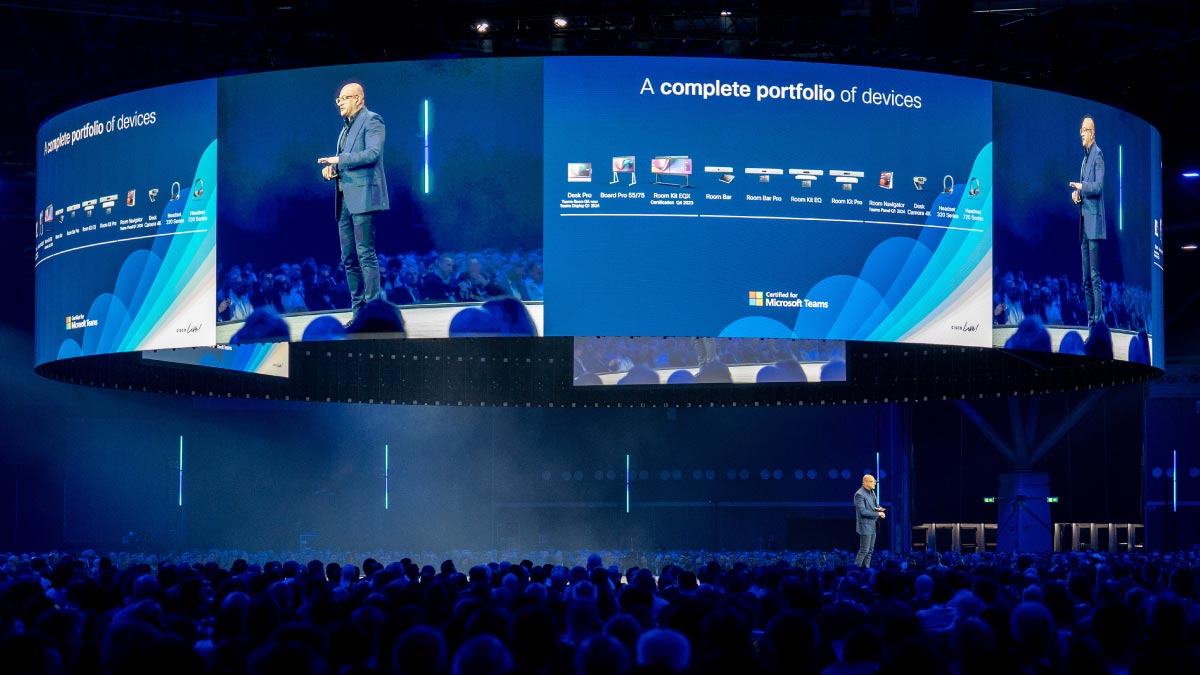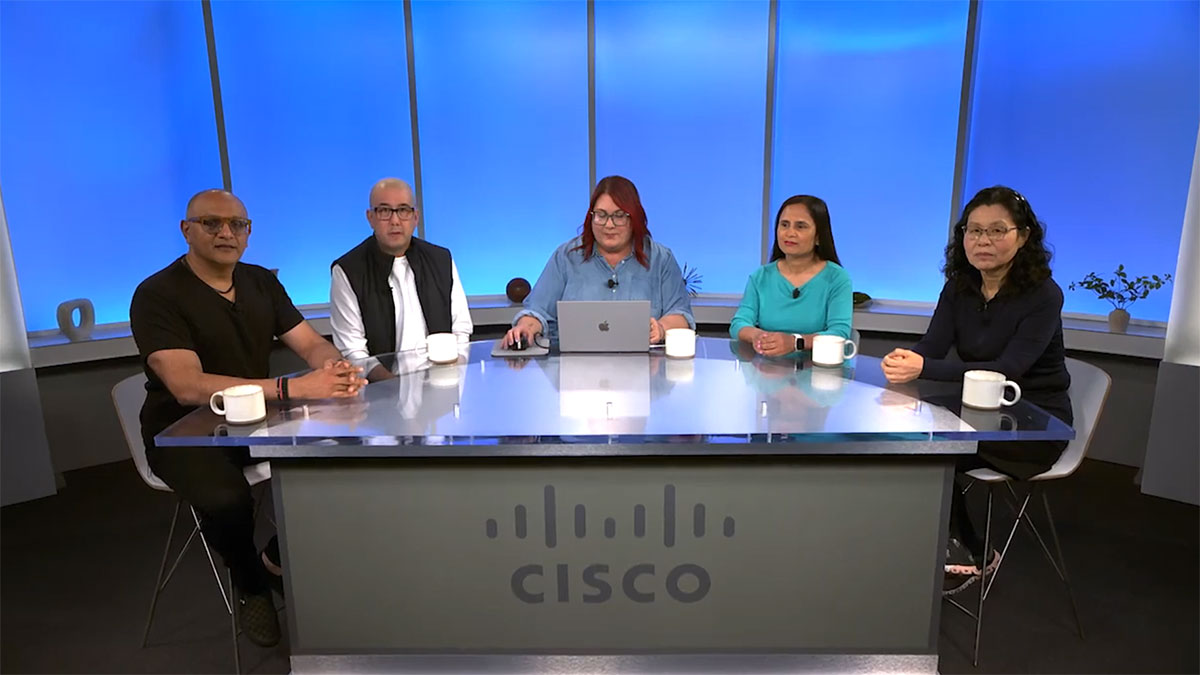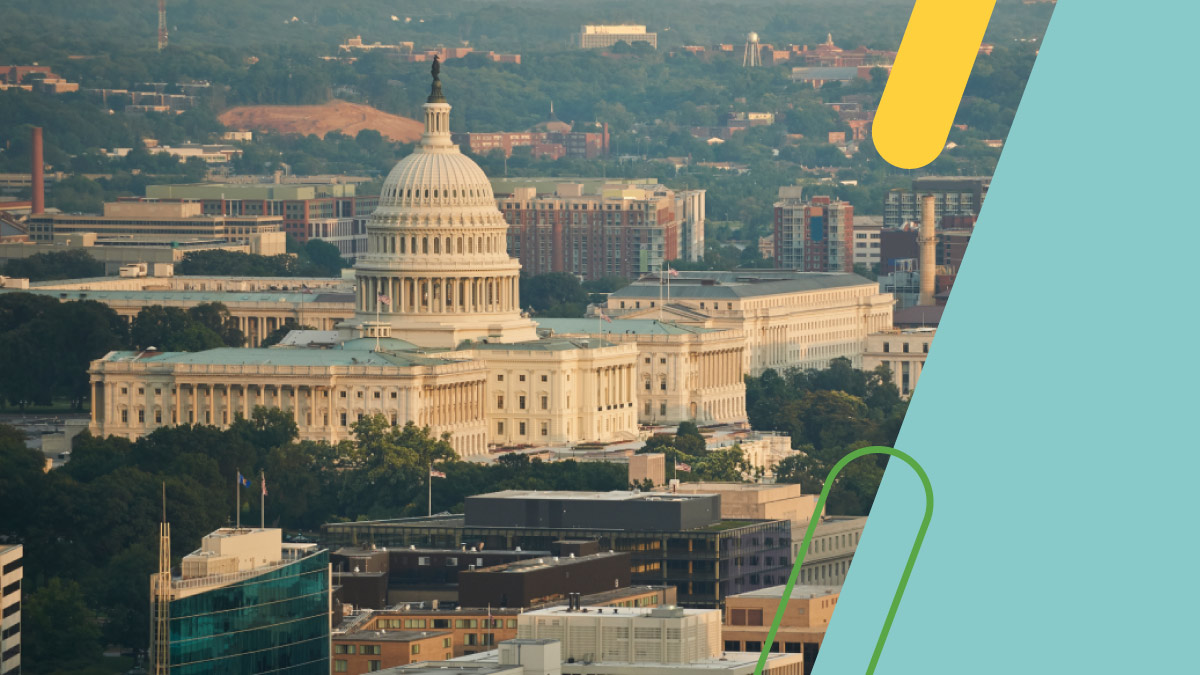When Oliver Tuszik, Cisco’s president for Europe, Middle East and Africa (EMEA), took the stage at Cisco Live Amsterdam this week, he began by highlighting the tech momentum sweeping the region.
Everything from mega projects in the Middle East to the upcoming Paris Olympics demands the best in technology, he stressed. But challenges — from war and climate change to energy costs and political instability — also loomed large.
“It’s clear that technology is key,” Tuszik stated. “Without technology, we wouldn't be able to manage the challenges we’re facing all around the world.”
As the company’s flagship event, with more than 14,000 attendees, Cisco Live is the perfect stage from which to spotlight the great Cisco innovations impacting the world today. Artificial intelligence, the technology Tuszik called “the biggest disruptor ever,” was top of mind everywhere. But to meet the challenges of AI, while adopting it in the most innovative and impactful ways, Tuszik lauded “the best Cisco portfolio ever.”
Cisco’s ability to help customers manage and thrive through that disruption was a key theme of the event, supported by customer success stories from the likes of L’Oreal and HSBC, to name but two.
“We can help you build the right infrastructure to run your own AI,” Tuszik said, “and to utilize the power of AI in a secure and responsible way.”
The network of the future, for today’s AI challenges
To further explain the profound advances in Cisco solutions enabled by AI — in networking, security, collaboration, and beyond — Tuszik introduced Jonathan Davidson, Cisco’s EVP and general manager for networking.
“Cisco is absolutely committed to taking digitalization and AI even further,” Davidson began. “To help you realize your outcomes. We are simplifying and we are securing networking everywhere for everyone at every scale.”
One key is the Cisco Networking Cloud, an AI-powered, platform-driven solution to network complexity, observability, and security.
“The Cisco Networking Cloud,” Davidson explained, “is an integrated platform for on-premise and cloud operating models. It lets you manage all of the Cisco networking assets and products from one place. Fragmented platforms converge, hidden threats are surfaced and eliminated, and the platform is powered by AI to simplify, secure and scale your operations across the entire network infrastructure.”
Taking those capabilities to the next level, Davidson announced a full integration between Networking Cloud and Cisco ThousandEyes.
“Cisco's dataset is orders of magnitude better than anyone else in this industry,” Davidson said. “Thousand Eyes is taking billions of measurements every single day across cloud data centers, service providers, and enterprise networks where it is able to detect critical issues and brown-out conditions so that you can understand the digital experience of your user’s applications. And most importantly, take action based upon that data.”
Such capabilities are critical as skyrocketing AI workloads place ever greater demands on networks. Cisco’s Silicon One architecture has already revolutionized networking in terms of speed, capacity, and energy savings. For example, Davidson cited a 97 percent power saving when London-based Colt Technology Services adopted Silicon One and Cisco routed optical networking.
Looking forward, Davidson announced new partnerships with NVIDIA and Nutanix to, as he put it, “extend our leadership position.”
“We all know that NVIDIA is synonymous with AI,” Davidson said, “and Cisco is the same with networking. And we're coming together on enterprise ethernet networking solutions. We are putting NVIDIA GPUs into Cisco servers and networking solutions so that you can design reliable, fast, scalable, sustainable architectures for AI workloads inside of your enterprise. Nutanix and Cisco have created a fully integrated and validated hyper-converged solution that includes compute, networking, and storage across data centers and clouds.”
Simplified security for a cloud-based world
Building on the platform theme, Jeetu Patel, Cisco EVP and GM of security and collaboration, discussed some exciting announcements around the Cisco Security Cloud, which offers integrated, end-to-end protection in a world where an average organization deploys a tangled web of security solutions from up to 70 vendors.
As Patel explained, Security Cloud is designed to defend the user, extend automated protection into the cloud, and quickly detect, respond, and remediate if a breach does occur.
One important new feature is the AI Assistant for Security, designed to automate and simplify a wide scope of tasks by adopting the most advanced natural language models and intuitive interface.
“We are going to make sure that every person who's managing a security infrastructure has an assistant, a sidekick, someone who can actually help them in making sure that their job is easier,” Patel explained. “We are calling it the Cisco AI Assistant for Security. It's one assistant that spans all of our security portfolio for the security cloud.”
Two other key announcements centered on protecting data and identity in a complex AI-driven world.
“Organizations want to make sure that when it does go out into an AI model, they can protect it,” Patel stressed. “So, we are securing AI with intellectual property protection that's part of Cisco Secure Access. And we also have advanced AI for email threat detection. So, you can detect patterns in email with advanced AI.”
Cisco’s identity protection, Patel stressed, goes beyond human-to-machine interactions, while detecting the smallest anomalies in behavior.
“Cisco identity intelligence is going to be completely open,” Patel said. “It's going to work with any identity provider that you might have. And it's going to cover the span of not just human identity, but also machine and service identity. Also, it is behavior aware. So, at the moment it starts seeing odd behavior, we're going to make sure that we can intercept.”
Helping build a sustainable future
Sustainability is no longer just the right thing to do; it’s a business imperative. Because companies want the benefits of efficiency, energy savings, and talent acquisition that come with sustainable strategies and technologies.
Adele Trombetta, Cisco’s SVP and GM for CX in EMEA, shared how Cisco can help.
“Sustainability is great for business,” she said. “And what makes the difference is how we use the technology. I want each of you to achieve profitable growth and your sustainability goals.”
“With the power of Cisco technology — Silicon One, AI, full-stack observability, and our amazing sustainability experts,” she continued, “we can help reimagine your data center with 40 percent less power capacity — and with 23 percent less operational costs for your offices with 50 percent less power consumption, all while improving your employee experience.”
Cisco’s Webex Control Hub is but one example of how energy-saving capabilities are embedded into Cisco technologies. Along with other innovative AI-powered features, aimed at monitoring and remediating video, device, and network performance, Jeetu Patel highlighted Control Hub’s energy-saving capabilities.
“We’re adding more capabilities for sustainability inside Control Hub,” he said. “And today we are announcing a new low-carbon mode for sustainability.”
One customer, Umar Ahmed, director and global head of network architecture for Deutsche Bank, described his company’s ongoing transformation.
“We are working with Cisco on our sustainability strategy for our global data centers,” he said. “With their expertise, we'll reduce our carbon footprint and more importantly, increase our usage of renewable energy.”
Customer Zero
Cisco CIO Fletcher Previn describes himself as Customer Zero, since no Cisco networking or security product ships without being fully tested and adopted under real-world conditions, starting with him and his team.
Given the scope of the innovation, especially around AI, benefits in productivity, simplicity, and energy savings have been powerful, he stressed.
“We are taking advantage of the productivity benefits of things like AI in the Webex suite and AI ops in things like Catalyst Center,” Previn said. “That is making it possible for us to take things that we would maybe typically do once every couple of months, like attenuate the radios on the wireless access points, and automate that to be something that's happening every 30 seconds by itself.”
The simplicity of platform-based solutions stood out for him as a particular advantage.
“I don't have to be the integrator of dozens of different niche point solutions,” Previn explained. “I can just take advantage of the entire integrated platform. That's saving me complexity and making the IT job a lot simpler.”
It was a fitting observation for a day focused on impactful innovation. As Patel concluded: “There’s just a tremendous amount of innovation in in all the areas of our business, from networking to security, to observability to collaboration. We're so excited and thrilled to bring all of this capability to you.”





